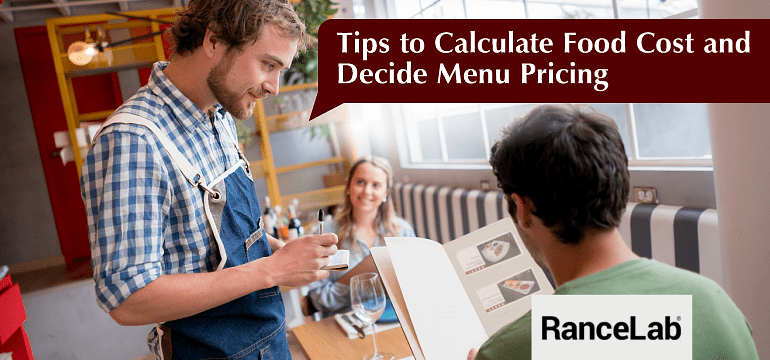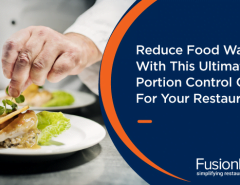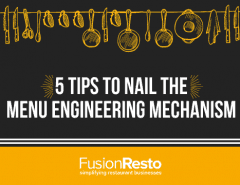Well, when you are all done with everything and feel like it is time to open your restaurant and create a buzz, you must halt. What about the pricing? Isn’t that the most vital aspect of any restaurant business or rather, any business? It may seem like a mammoth task, but in reality, it isn’t. Some simple formulae can help you price your food items in the best possible way. How to do that? Here is how you can effectively calculate food cost for your restaurant without having to fret over the big calculations.
Pricing your menu
The agenda is to cut down on your procurement costs while raising the cost to your customer in a reasonable manner to maximize your profits.
It is always very easy to just put a particular number and stick to it; like charging your patrons four times your food costs. However, it is not a good idea to just blindly put a number on that menu. It is best to calculate your risks and lower them. You are not only supposed to meet your financial needs here. You also need to look at what your target group is capable of paying.
Your food costs and your menu pricing will affect your restaurant business entirely. That is why it is so important to start this task much earlier on in your venture.
Considerations
Food costs keep fluctuating from time to time. Therefore, it is wise for you to keep track of those expenses regularly. Here is all that you need to consider before you start jotting down the menu prices on every food item that you will serve.
• Direct costs
This comprises of what you pay directly for procuring food, the portion size, and wastage.
• Indirect costs
This is the ‘value’ you are providing to your patrons. This broadly includes things like hygiene, lighting, and ambiance.
• Overheads
These are the major frills you need to spend on including marketing, social media, promotions, etc.
• Labour expenses
An example of this would be a food item that involves more time and skill to be cooked.
• Service costs
This will depend on the kind of restaurant you have. QSRs will not add much to this cost because there is hardly any service needed here while a fine dining restaurant can take the liberty to charge a little higher owing to the quality of service they provide.
The Methods
Here are the different formulas you can use to determine your final menu pricing.
Method #1
Divide the purchase cost by the portion you serve. This gives you the portion cost.
Say you purchase 100 pounds of meat at 10INR per pound; your purchase cost becomes 1000 INR. If you use half a pound of meat for each portion, then 1000/200 (half a pound divided by 100). So your cost per portion is 50.
Repeat this for every single part that makes a whole dish, and you will arrive at a final cumulative value. Say rice plus meat plus vegetables comes to a total of 150 INR per portion for this meal.
When you have the complete cost, you can calculate your final menu price by using a percentage you decide on. Usually, restaurants use a 25-30% measure. So, your dish should be priced by adding 30% of 150 to 150, which is 45+150 which comes to a total of 195 INR.
Method #2
This formula is relatively simple. Here you simply price your food items according to what your competitors have priced them at. You could either go for the exact pricing or go slightly lower to attract those who would like to pay lesser. On the contrary, you could also go slightly higher as this works on your target group’s psyche, making them feel like you have better quality to offer.
Method #3
Another simple way of doing it is to work it according to the supply and demand. If your restaurant is located at a place which is in demand, you can raise your margins. You must know your market very well to opt for this method; else you will fail at it.
As you can see, the task looks tedious but is not as tough as you made it out to be in your head. This is the most important aspect of your business, and you need to do this before doing anything else. A good restaurant software will always use updated technology that will help you with your menu pricing without you having to do anything manually. Also important is for you to keep abreast with all the current costs of foods and ingredients that you purchase from your vendor network.
For saving on your food costs, you must scout around for the best sources. Look for lesser known brands that offer you food items and ingredients at a much lower price than branded ones will. Your food items must also be appropriately portioned. Bigger portions mean that there is a risk of wastage. Moreover, make sure that you are using appropriately sized crockery. The bigger the plate size, the more you will have to offer, and this again leads to wastage.
Each and everything counts. Don’t skip anything, however small it may be. Every cost needs to be covered, and profit margins need to be added appropriately. Make sure you neither stoop too low nor price everything very high. Try and keep your menu prices just right to reap the benefits and to rake in the profits.







Leave a Reply
You must be logged in to post a comment.